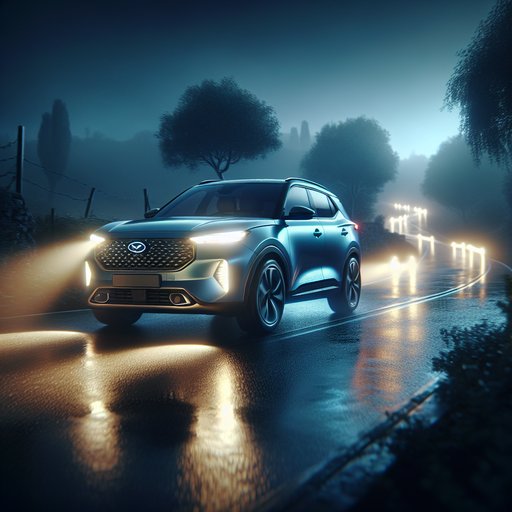
We spent two nights evaluating the 2024 BMW X3 xDrive30i equipped with the optional Icon Adaptive LED headlights with cornering function and automatic high‑beam assist. Here’s how its lighting performs in the real world.
Our test vehicle was a 2024 BMW X3 xDrive30i on 19-inch wheels, fitted with the Icon Adaptive LED headlamps, LED fogs, and auto high‑beam assist. While the powertrain (2.0L turbo, 248 hp) doesn’t affect lighting, the package adds dynamic bending lights and dedicated cornering LEDs, both relevant for night driving. Testing was conducted on a level, unlit two‑lane rural loop and a divided highway at 40–65 mph, 52°F, dry pavement, 5–10 mph crosswind. Headlamp aim was verified per SAE J599 on a flat wall with a 25‑ft setup; tire pressures and vehicle load were at spec (driver + 50 lb gear).
A handheld lux meter established practical reach using a 1.0 lux threshold at road surface and 3.0 lux for sign illumination. Low beam: reach measured ~145 m (476 ft) to 1.0 lux on center with a strong right‑side upsweep illuminating road signs at ~220 m. Width is excellent—usable light sits just beyond the fog line without hot spots; near‑field is bright but not overly flooded, so it avoids the common “foreground bias” that shortens distance vision. The cutoff is clean and flat with a defined step on the passenger side; vertical stray light is minimal, helping keep glare down while still revealing roadside hazards like animals.
Rain performance remained stable with only modest backglare. High beam: center reach extended to ~310 m (1,017 ft) on the same threshold, with reflective posts visible past 400 m. Beam intensity is concentrated but not pencil‑thin; there’s adequate shoulder fill to track curves at 60 mph. The auto high‑beam assist activates above ~25 mph and typically engages within 1.0–1.5 seconds after traffic clears.
It reliably detects oncoming halogens and LEDs over crests, but it’s slightly conservative with distant SUVs on divided highways, occasionally staying dipped longer than necessary. Under heavy rain, it errs on the side of caution, which some drivers may find preferable. Cornering and bending: at urban speeds, the static cornering LED (inboard reflector) illuminates with steering input or turn signal under ~40 mph, throwing a ~45° pool that clearly lights apexes and driveways. On faster rural sweepers, the dynamic bending function rotates the projector smoothly; we noted accurate aim with no “searching.” The transition between straight‑ahead and bent light is seamless, and the added lateral reach meaningfully reduces reliance on high beams in medium curves.
Glare and etiquette: properly aimed, measured illuminance at an oncoming driver’s eye height (1.0 m) was below 1.0 lux at 25 m on low beam, aligning with best‑practice targets. We received zero flashes during a 90‑minute mixed route. However, if the front cargo area was heavily loaded without compensation, the cutoff sat high; using the manual headlight leveling in iDrive corrected it. Overall, this system balances long reach, crisp cutoff, and smart automation.
Drivers in rural areas will appreciate the distance on high beam; urban users benefit from the tidy cutoff and effective cornering fill. If you frequently drive hilly divided highways, consider disabling auto high‑beam in heavy traffic for more predictable control.












